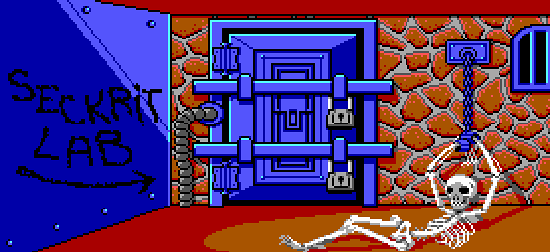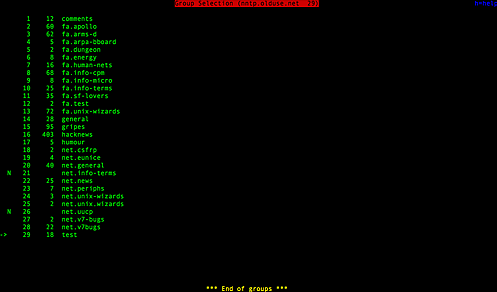Links and write-ups about beautiful things from around the web!
-
Cryptochrome
Research continues on whether humans (and other animals) have the ability to perceive magnetic fields:
Many birds have a compass in their eyes. Their retinas are loaded with a protein called cryptochrome, which is sensitive to the Earth’s magnetic fields. It’s possible that the birds can literally see these fields, overlaid on top of their normal vision. This remarkable sense allows them to keep their bearings when no other landmarks are visible.
But cryptochrome isn’t unique to birds – it’s an ancient protein with versions in all branches of life. In most cases, these proteins control daily rhythms. Humans, for example, have two cryptochromes – CRY1 and CRY2 – which help to control our body clocks. But Lauren Foley from the University of Massachusetts Medical School has found that CRY2 can double as a magnetic sensor.
Vision is amazing, even more so when you take into account the myriad other things that animals and insects can detect beyond just our “visible” EMF spectrum. See also: box jellyfish with their surprisingly complex (and human-like) set of 24 eyes.
-
Robert H Jackson on the 4th Amendment
These, I protest, are not mere second-class rights, but belong in the catalog of indispensable freedoms. Among deprivations of rights, none is so effective in cowing a population, crushing the spirit of the individual, and putting terror in every heart. Uncontrolled search and seizure is one of the first and most effective weapons in the arsenal of every arbitrary government.
Justice Robert H. Jackson, chief U.S. prosecutor at the Nuremberg trials, writing on the 4th Amendment in his dissenting opinion of Brinegar v. United States (1949)
(Via Free to Search and Seize, an op-ed in today’s New York Times on the recent chipping away at privacy protections)
-
Marjane Satrapi on Adapting Comics for Animation
Animation and comics are false siblings. They resemble one another but they’re two completely different things. The relationship a reader has with a comic is nothing like the one a viewer has with a film. When you read a comic, you’re always active, because you have to imagine all the movements that happen between the frames. In a film, you are passive: all the information is there. And when you make a comic it never happens that you have 500 or 1,000 people reading it in the same place at the same time, all reacting.
Marjane Satrapi, creator of Persopolis, talks about how she found success in adapting her acclaimed two-part graphic novel into an animated feature.
Bonus tip: cast Iggy Pop.
(Via Mayerson on Animation)
-
Maniac Mansion Disassembled

The Mansion – Technical Aspects
If you love the old Lucasfilm games and want a peek into how their venerable game engine worked from a very technical perspective, you should read this article that walks through a disassembled Maniac Mansion. Extra bonus: Ron Gilbert, the creator of the SCUMM scripting language, drops a lengthy note in the comments section with insider info:
One of the goals I had for the SCUMM system was that non-programers could use it. I wanted SCUMM scripts to look more like movies scripts, so the language got a little too wordy. This goal was never really reached, you always needed to be a programmer. 🙁
Some examples:
actor sandy walk-to 67,8
This is the command that walked an actor to a spot.
actor sandy face-right
actor sandy do-animation reach
walk-actor razor to-object microwave-oven
start-script watch-edna
stop-script
stop-script watch-edna
say-line dave “Don’t be a tuna head.”
say-line selected-kid “I don’t want to use that right now.”I think it’s amazing that they managed to build a script interpreter with preemptive multitasking (game events could happen simultaneously, allowing for multiple ‘actors’ to occupy the same room, the clock in the hallway to function correctly, etc.), clever sprite and scrolling screen management, and fairly non-linear set of puzzles into software originally written for the 8-bit C64 and Apple II era of computers.
-
olduse.net Brings Back Usenet from 30 Years Ago

Screenshot from an interesting project, olduse.net ― Usenet posts reappearing in realtime as they did exactly 30 years ago, a new way of experiencing the history of the early Net. See how things were mere months before the launch of B-News, long before the Great Renaming and the creation of the alt.* hierarchy, and best of all, the introduction of spam is more than a decade away still!
You can use either the browser-based client to poke through the messages, or point your favorite NNTP client to the site and experience it as you would the real Usenet. Nice!
Also, I like this answer from the FAQ:
Can I post to olduse.net?
Your posts will be accepted, but will not show up for at least 30 years. 🙂(Via Waxy Links)
-
Extemeties Skateboard Video
Music – Blackbird Blackbird “Pure” // http://blackbirdblackbird.bandcamp.com
Skateboarding – Aryeh Kraus
Director: Eli Stonberg // http://elistonberg.com
Executive Producer: Danielle Hinde
Commissioner: Sara Greene
Producer: Josh Fruehling
Director of Photography: Ross Riege
Camera Operator: Hermes Marco
Camera Operator: Ariana Natale
Editor: Eli Stonberg
Asst Editor: Josh Sasson
PA: Jackson HooseProduced by Doomsday Entertainment // http://www.doomsdayent.com
In Association with The Masses // http://www.wearethemasses.com
Thanks to The Idealists // http://theidealists.com
Created for Burn // www.burn.comExtremities: six GoPro cameras attached to the skateboarder’s arms, legs, head, and one mounted underneath the deck (my favorite), combined with a couple of static cameras for context. Between this and the hula hoop video, these little cameras are cranking out some fascinating new perspectives this week.
-
Onion AV Club: “Electric like Dick Hyman”: 170 Beastie Boys references explained
This list has been making the rounds for a couple of weeks now, but I’m just getting to it. Pretty thorough, but Marsha was sad to see no mention of the Frugal Gourmet! If you need more ‘splainin’ about their allusive lyrics or samples, you might try the even more comprehensive BeastieMania Song Spotlight, which ought to keep you busy for a long, long while.
-
26 Terabit-per-second Laser
Researchers at the Karlsruhe Institute of Technology set a new record by transmitting 26 terabits of a data per second (“the entire Library of Congress in 10 seconds!” as the usual benchmark goes) using a single laser and a clever FFT and frequency comb technique to split the light into 300+ discrete colors:
The Fourier transform is a well-known mathematical trick that can in essence extract the different colours from an input beam, based solely on the times that the different parts of the beam arrive. The team does this optically – rather than mathematically, which at these data rates would be impossible – by splitting the incoming beam into different paths that arrive at different times, recombining them on a detector. In this way, stringing together all the data in the different colours turns into the simpler problem of organising data that essentially arrive at different times.
Neat.
(Via ACM TechNews)
-
We were basically trying to see if we could get each other to drop out of school.
Mike Monteiro of Mule Design on attending art school:
But the skill I picked up in school that turned out to be the most valuable was learning how to take a punch. We had these insane critiques where we’d trash each other viciously. We took pride in how brutal we could be to one another. I think it went way beyond constructive. It was an art form in itself. We were basically trying to see if we could get each other to drop out of school. And professors were the worst—we had one guy who’d slash paintings, which is completely devastating, right? I mean you work your ass off on something and your teacher just walks up to it and literally rips it to shreds. It’s kind of magnificent. And afterwards, we’d all go off and drink and have sex with another. But those critiques taught me how to not take criticism personally. It was always about the work. And if the work quality wasn’t there you were marked for demolition.
Yep, sounds about right. The ability to take (and work from) criticism was one of the few life-skills I directly picked up from my undergraduate art background, too.
No one ever literally slashed my paintings, but one professor did tell us during a mid-semester critique that he thought the class’s work as a whole was like “a giant ball of shit rolling downhill, getting bigger.” Fun times!
(Hat tip to Austin Kleon)
-
RIP Macho Man
RIP Macho Man. Few people exemplified the XTREME!!!! 1990s marketing aesthetic quite so well.
